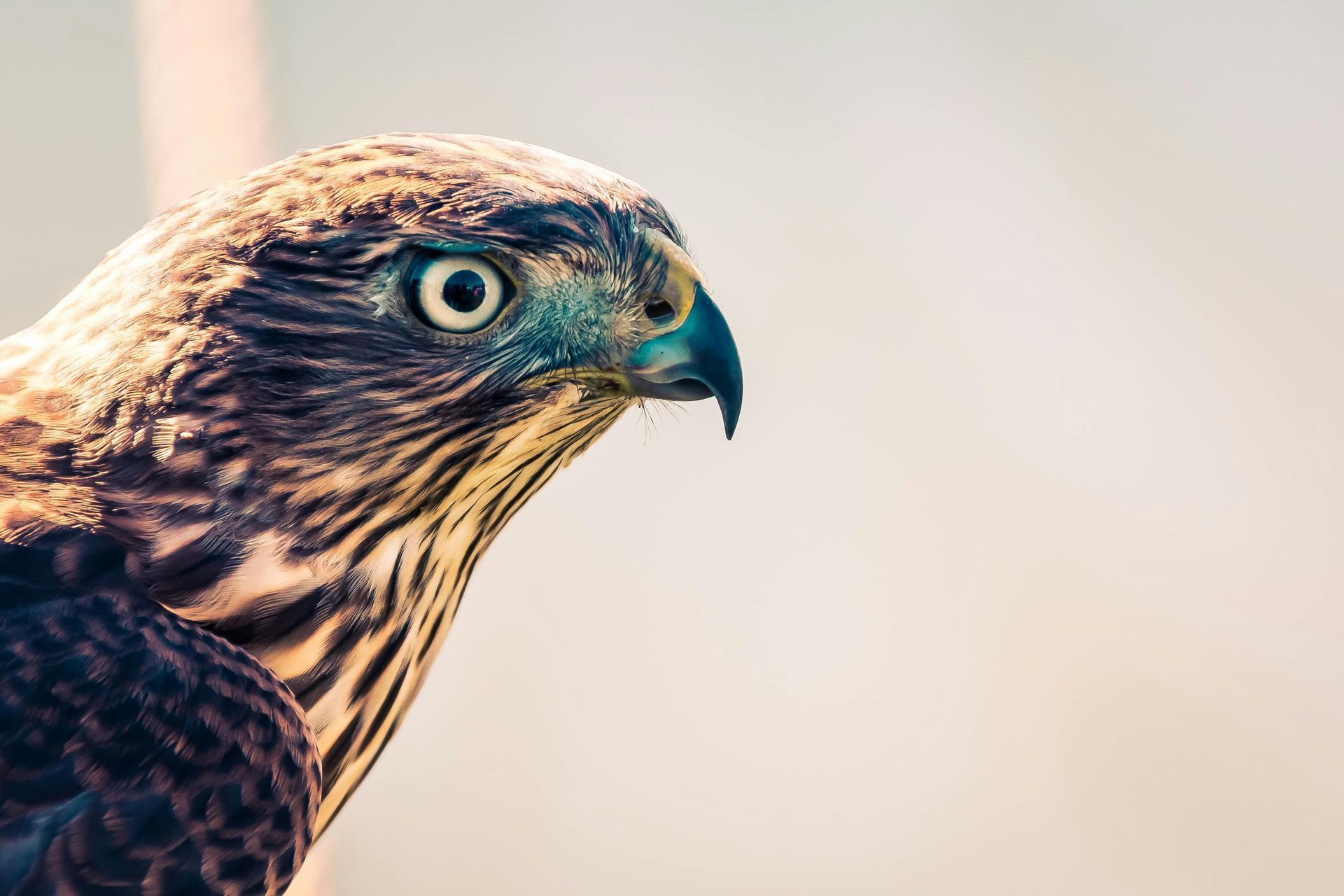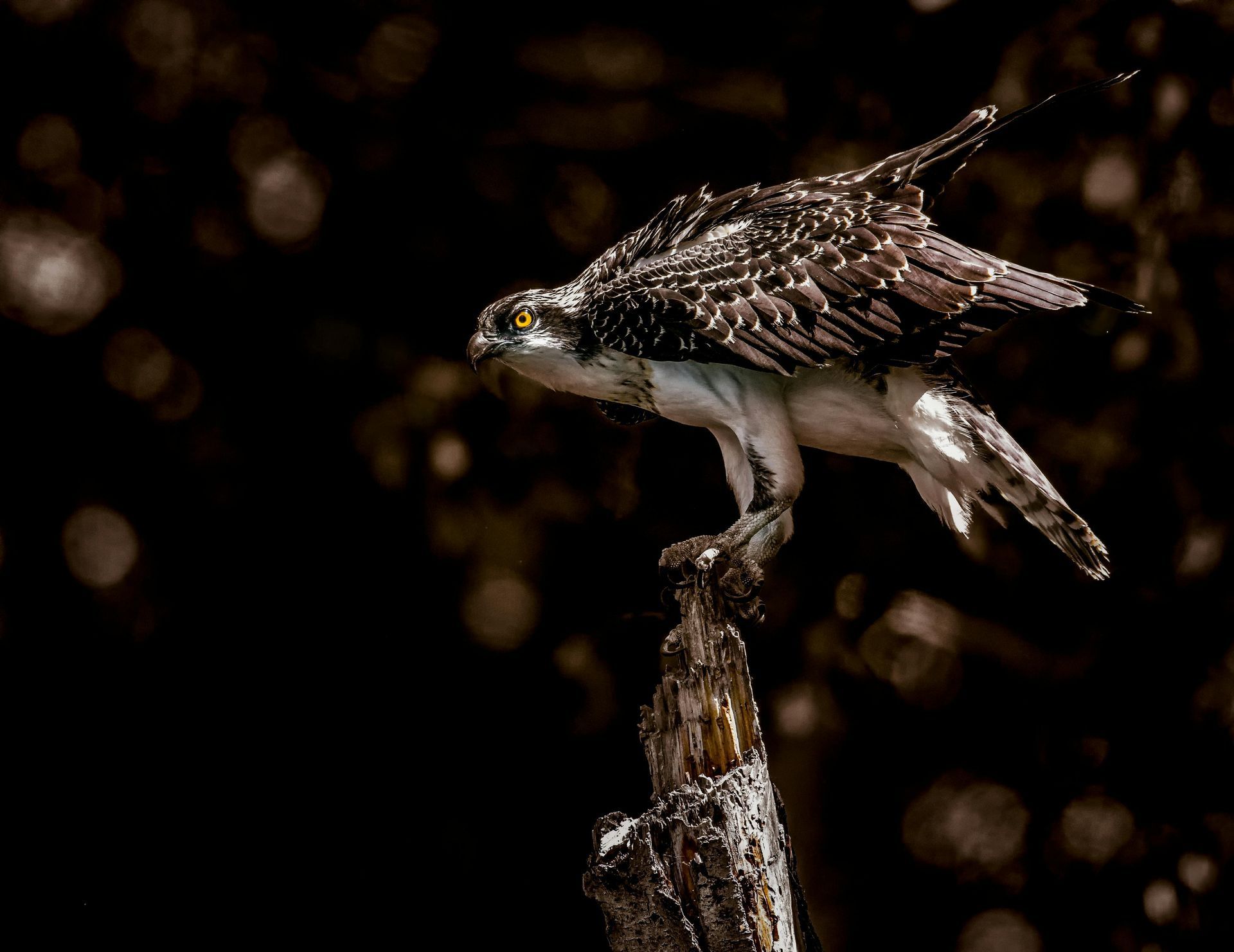Hawks are powerful birds of prey known for their sharp vision, hooked beaks, and formidable hunting skills. Found throughout the world, hawks inhabit a wide range of environments, including forests, grasslands, deserts, and urban areas. They play a vital role in controlling rodent and small mammal populations, helping to maintain balanced ecosystems.
Most hawks range from 16 to 24 inches in length with wingspans between 3 and 4 feet. Their plumage varies by species, often displaying brown, gray, or rust-colored feathers with distinctive banding on the tail. Common North American species include the Red-tailed Hawk and Cooper’s Hawk .
Hawks are opportunistic hunters, feeding on a variety of prey such as rodents, reptiles, birds, and insects. They use their keen eyesight to spot prey from great distances and their powerful talons to capture and subdue it. Mating pairs are often monogamous, and females lay 2-4 eggs per clutch. Both parents participate in raising the chicks, which fledge after about 6 weeks.
Natural predators of hawks include larger birds of prey and raccoons, but human-related threats such as habitat destruction, poisoning, and vehicle collisions are significant risks. Despite these challenges, many hawk species have adapted well to human-altered landscapes.

For your safety and the well-being of wildlife, please observe animals from a distance and avoid touching or disturbing them. If you encounter an animal that appears injured or in distress, contact a licensed wildlife rescue organization for guidance before intervening.
Found An Animal? Not sure how to help a wild animal in need? Learn when to step in, who to call, and how to help safely.
Did You Know?
- Hawks have eight times the visual acuity of humans, allowing them to spot prey from over a mile away.
- The Red-tailed Hawk is one of the most commonly seen raptors in North America and is often used in Hollywood films to represent all raptors.
- Some hawk species, like the Swainson’s Hawk, migrate over 5,000 miles between North and South America.
- Cooper’s Hawks are highly agile and are known for hunting other birds in dense forests.
- Unlike most birds, hawks will reuse old nests, sometimes repairing and adding to them each breeding season.
- Hawks have a specialized third eyelid, called a nictitating membrane, which protects their eyes while maintaining visibility.
- Their talons are incredibly strong, capable of exerting over 200 pounds of pressure per square inch.
- In some cultures, hawks symbolize protection, strength, and clarity of vision.
Juvenile hawks often have different plumage than adults, which helps them blend into their surroundings more effectively.
Problems Faced In The Wild
- Habitat Loss: Urban development reduces nesting and hunting areas.
- Poisoning: Secondary poisoning from consuming prey affected by rodenticides is a significant threat.
- Vehicle Collisions: Hunting near roadsides increases the risk of being struck by vehicles.
- Climate Change: Altered weather patterns impact prey availability and migration timing.
- Illegal Trapping and Shooting: Hawks are sometimes targeted due to misconceptions about their impact on game bird populations.
- Predation: Eggs and chicks are vulnerable to predation by raccoons, owls, and larger raptors.
Tips For Cohabitation
- Preserve Large Trees: Mature trees provide essential nesting and hunting perches for hawks.
- Avoid Disturbing Nests: Keep a safe distance from active hawk nests, especially during the breeding season.
- Provide Natural Buffers: Encourage natural spaces with native vegetation to support prey species.
- Reduce Window Strikes: Use decals or other markers to make windows more visible to birds.
- Educate Others: Share information about hawks’ role in controlling rodent populations and maintaining healthy ecosystems.
- Avoid Poisons: to protect Hawks’ food sources.



